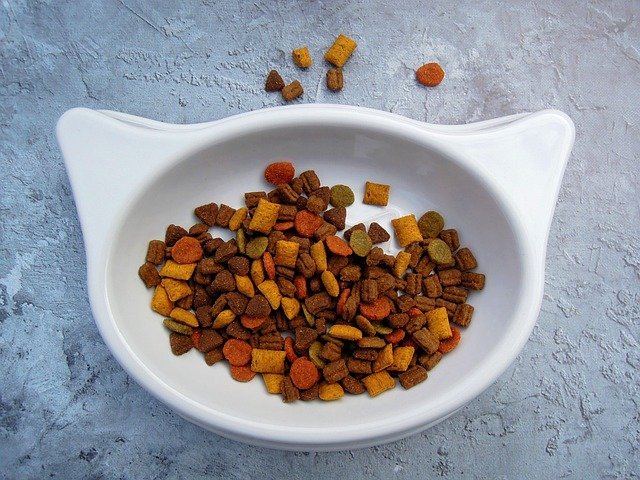How Cats Eat and Enjoy Their Food
Cats need different types of food to stay healthy and active. This article explains what kinds of food cats eat, how their meals are prepared, and how people choose the right foods for different cats. Learn about dry, wet, and mixed foods and how cats enjoy each kind.

What Makes Wet Cat Food Appeal to Felines
Wet cat food closely mimics the natural moisture content found in prey animals, making it particularly appealing to cats. The high water content, typically around 75-85%, helps maintain proper hydration while delivering concentrated nutrition. Cats often prefer the texture and temperature of wet food because it resembles fresh prey, triggering their natural hunting instincts. The enhanced aroma and palatability of wet formulations also stimulate their appetite more effectively than drier alternatives. Many cats show increased enthusiasm during feeding time when wet food is served, often displaying behaviors like purring, head rubbing, and eager anticipation.
Understanding Dry Cat Food Preferences and Eating Patterns
Dry cat food offers convenience and different textural experiences that some cats genuinely enjoy. The crunching action can provide mental stimulation and help maintain dental health through mechanical cleaning. Many cats develop specific preferences for kibble size, shape, and hardness based on their individual mouth structure and eating style. Some felines prefer grazing throughout the day on dry food rather than consuming large meals at once. The storage convenience and longer shelf life of dry formulations make them practical choices for many households, though cats may require additional water sources to maintain proper hydration levels.
Identifying Quality Cat Food Through Nutritional Standards
Cat food nutrition centers around meeting felines’ requirements as obligate carnivores, meaning they need specific nutrients found primarily in animal tissue. High-quality formulations contain adequate protein levels, typically 26% minimum for adult cats, along with essential amino acids like taurine and arginine. Proper nutrition includes appropriate fat content for energy and essential fatty acids, while maintaining balanced mineral levels for organ function. Reading ingredient lists helps identify foods with whole protein sources listed first, avoiding excessive fillers or artificial additives that provide little nutritional value.
Creating Homemade Cat Food Safely and Nutritiously
Homemade cat food preparation requires careful attention to nutritional completeness and food safety protocols. Cats need specific ratios of protein, fat, vitamins, and minerals that can be challenging to achieve without proper knowledge and supplementation. Raw or cooked meat-based recipes must include essential supplements like taurine, calcium, and vitamin E to prevent deficiencies. Many veterinarians recommend consulting with pet nutritionists before implementing homemade diets to ensure all nutritional requirements are met. Proper food handling, storage, and preparation techniques become critical when preparing fresh meals to prevent bacterial contamination and foodborne illness.
How Cats Experience Taste and Texture During Meals
Cats possess unique sensory capabilities that influence their food enjoyment, including a reduced ability to taste sweetness but enhanced sensitivity to amino acids and fats. Their rough tongues, covered with backward-facing papillae, help them process different textures and extract maximum nutrition from their meals. Temperature preferences often lean toward room temperature or slightly warm food, mimicking the body temperature of fresh prey. Many cats show distinct preferences for specific textures, from smooth pâtés to chunky gravies, and may reject foods based solely on texture rather than taste.
| Food Type | Average Monthly Cost | Key Benefits | Considerations |
|---|---|---|---|
| Premium Wet Food | $40-60 | High moisture, palatability | Higher cost, refrigeration needed |
| Standard Dry Food | $15-25 | Convenience, dental benefits | Lower moisture, may require supplements |
| Prescription Diets | $50-80 | Targeted health support | Veterinary guidance required |
| Homemade Meals | $30-50 | Complete control over ingredients | Time-intensive, nutritional expertise needed |
Prices, rates, or cost estimates mentioned in this article are based on the latest available information but may change over time. Independent research is advised before making financial decisions.
Recognizing Signs of Food Enjoyment and Satisfaction
Cats demonstrate food satisfaction through various behavioral cues that indicate both immediate enjoyment and long-term nutritional contentment. Positive feeding behaviors include steady eating pace, minimal food rejection, and relaxed body posture during meals. Long-term satisfaction appears through maintained body weight, healthy coat condition, and consistent energy levels throughout the day. Some cats show appreciation through specific vocalizations before meals or gentle head butting against their food bowls. Understanding these signals helps owners identify successful feeding routines and make appropriate adjustments when necessary.
Understanding how cats eat and enjoy their food involves recognizing their unique sensory experiences, nutritional requirements, and individual preferences. Whether choosing wet or dry formulations, maintaining proper nutrition standards, or observing feeding behaviors, successful cat feeding requires attention to both biological needs and personal preferences. By providing appropriate food choices and respecting natural eating patterns, cat owners can ensure their feline companions maintain optimal health while genuinely enjoying their meals.




